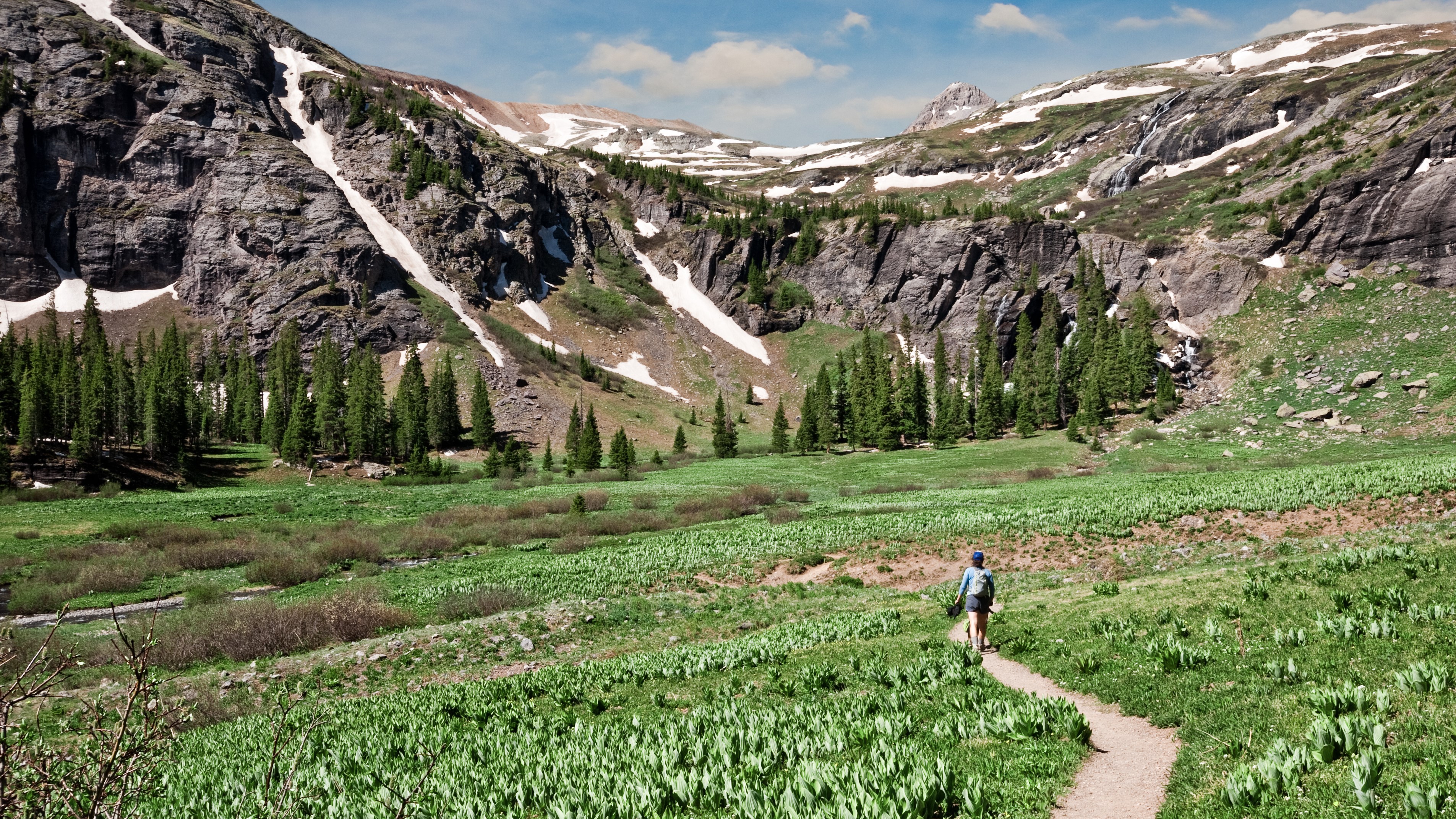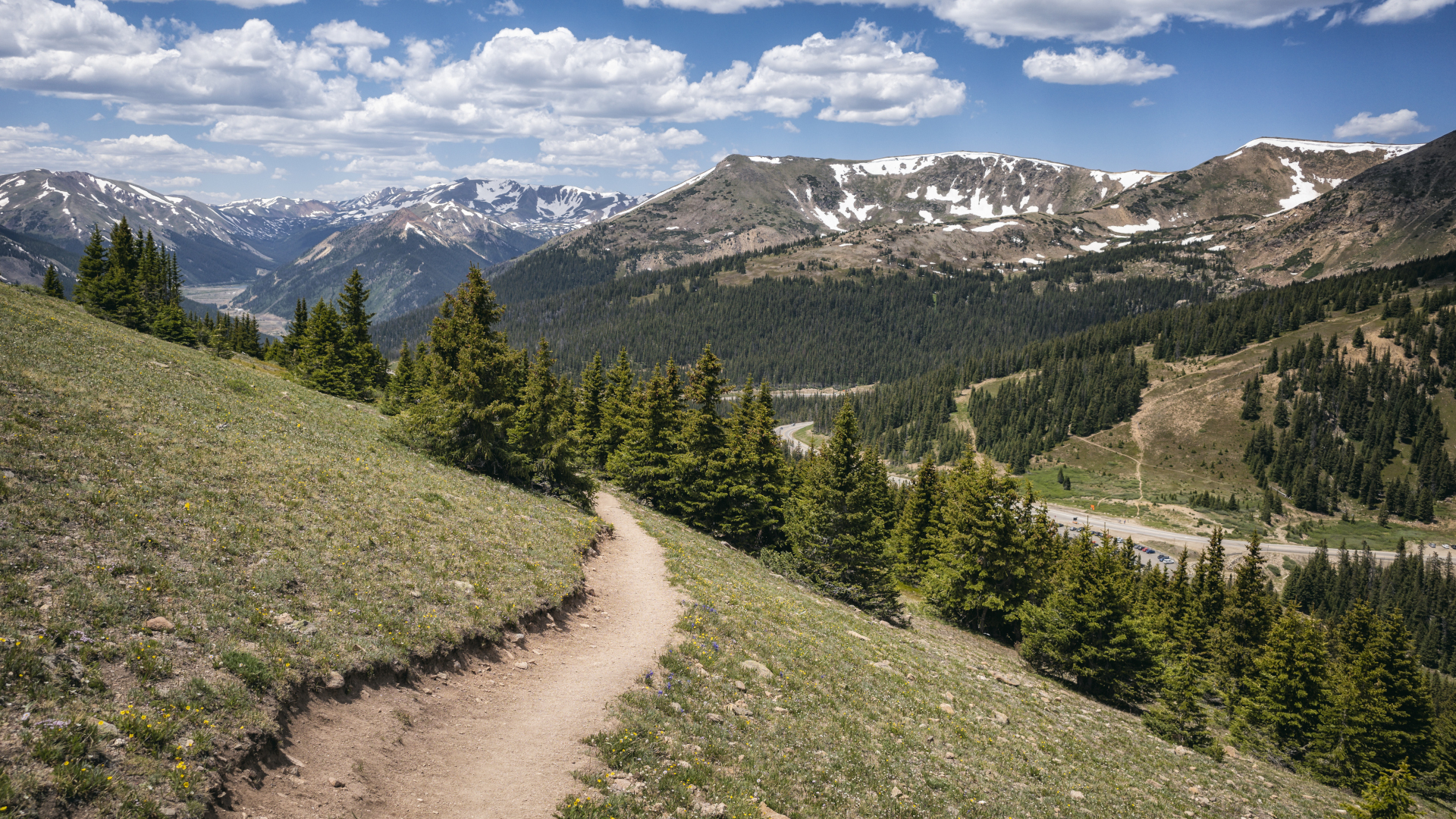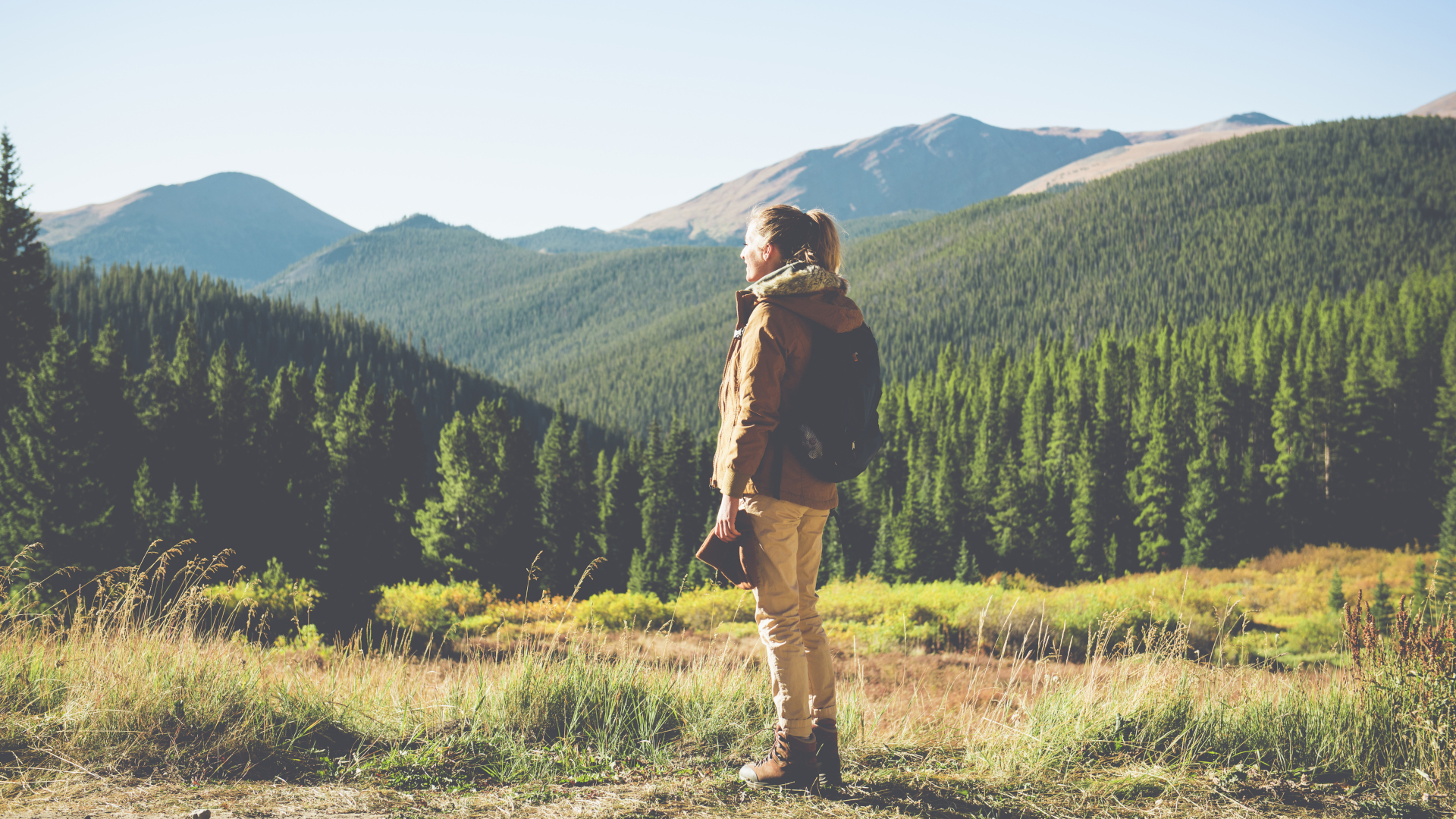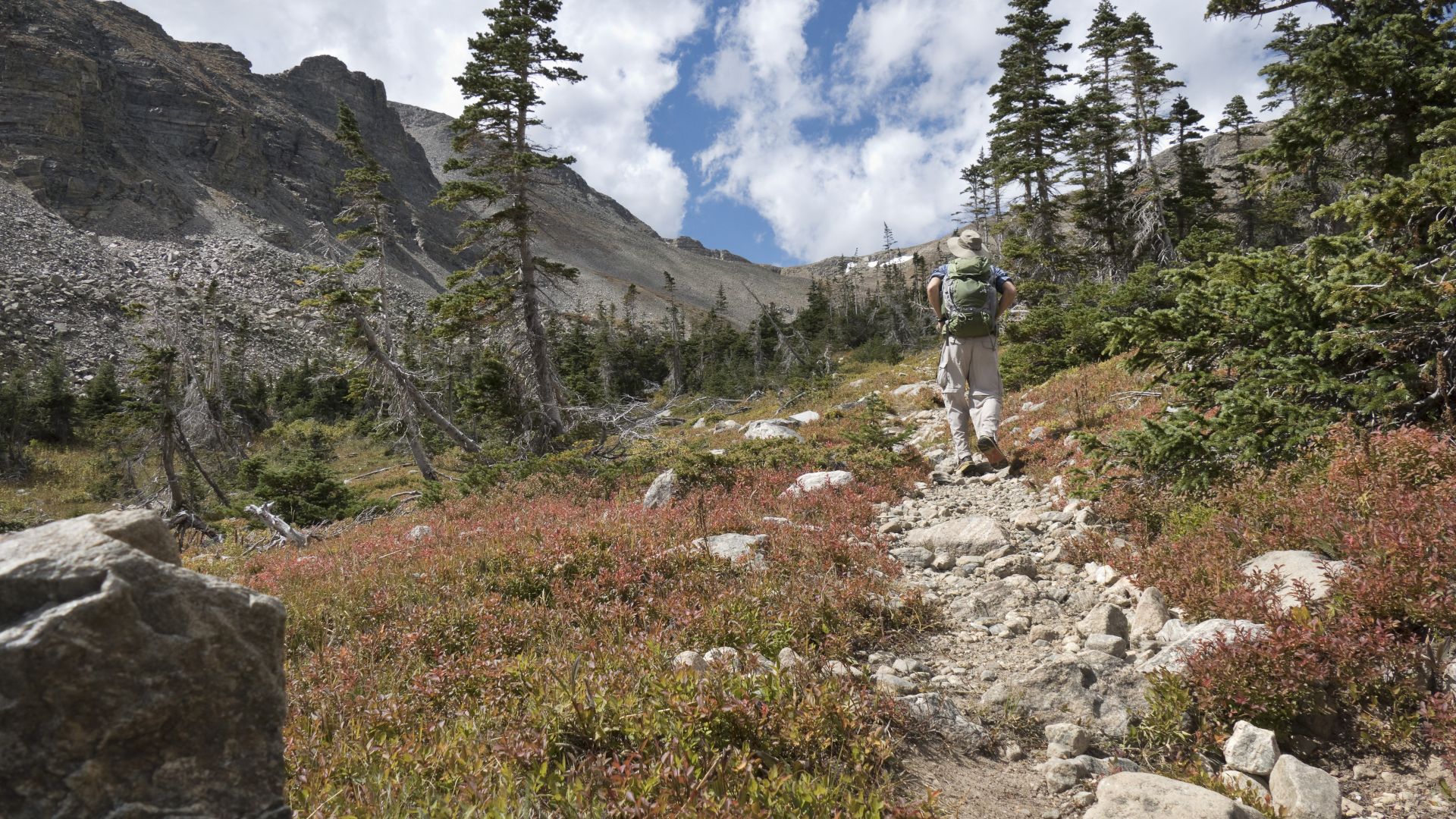A quick guide to hiking the Colorado Trail
With a decent pace and some understanding folks in your life, you could potentially hike the Colorado Trail without losing your job or destroying your marriage

Are you tired of coveting the life of thru-hikers who get off the Appalachian Trail or Pacific Crest Trail totally transformed by a life-changing experience that you simply don’t have the time or means to enjoy? Perhaps you’re a seasoned hiker who’d love to make an epic escape like this, but work, family and a mortgage mean that taking a six-month sabbatical is out of the question. If so, have you considered the Colorado Trail?
The Colorado Trail is by no means diminutive, but at about one fifth the distance of the AT and undertaken with a decent pace and some understanding folks in your life, you could potentially do it without losing your job or destroying your marriage. Plus, it’s one of the most gorgeous stretches of hiking trail around. Read on to discover what’s so great about the Colorado Trail.

What is the Colorado Trail?
The Colorado Trail is a long distance hiking, biking and equestrian trail stretching from Denver to Durango that very nearly didn’t happen. According to the Colorado Trail Foundation (CTF), rumblings of a “Rocky Mountain Trail” go back decades, with Bill Lucas of the US Forest Service publicly championing the idea back in 1970. Work got underway to officially create the trail in 1974 but by 1979, funding had all but dried up, bureaucracy had sunk in, and the efforts drew to a halt.
A 1984 article in the Denver Post titled “Trail to Nowhere” drew the attention of the governor at the time, who threw his political weight behind continuing the work and thanks to a crew of enthusiastic volunteers, the trail was completed in 1986.
Today, the Colorado Trail is a continuous path that stretches for 567 miles through six National Forests, six wilderness areas, eight mountain ranges, multiple historic mining towns, ancient native American trails and even Copper Mountain Ski Resort.
If you’ve spent any time at all in Colorado, you already know that this trail delivers some of the finest scenery in the country and will deliver a once-in-a-lifetime experience for any thru-hiker.

How long does it take to do the whole Colorado Trail?
You can generally expect the Colorado Trail to take you between four and six weeks. There are FKT-baggers out there who have done it in as little as seven days (supported) and 10 days unsupported, but assuming that you’re hiking 15 miles a day you’re looking at about 37 days of hiking, not including stopping for rest days.
Advnture Newsletter
All the latest inspiration, tips and guides to help you plan your next Advnture!
Is the Colorado Trail difficult?
Sure, all hiking in Colorado is difficult, especially if you’re not used to elevation. The trail is well marked and maintained, but it’s high. For 235 miles, the Colorado Trail runs concurrent with the Continental Divide Trail, which stretches from Canada to Mexico and is known for being gruelling. The highest point on the trail is Coney Summit which is just over 13,300ft while the lowest point is at Waterton Canyon, the northern terminus just south of Denver. Between those two points, you’ll average elevations of around 10,300ft so you’ll want to train for high altitude hiking before you set off and understand the unique conditions that elevation can bring (colder temperatures, more severe weather, lightning strikes).
Many hikers choose to hike the trail north to south, since the stretch closer to Denver is lower and easier, and this allows them to get in shape on the way to the more difficult and remote terrain in the south.
Another aspect that makes hiking the Colorado Trail difficult is that resupply towns are often more than 10 miles from the trail, meaning you may need to coordinate shuttles or food drops. The CFT has an online form you can fill out to get access to a list of shuttlers and trail angels who may be able to help you out.

Can a beginner hike the Colorado Trail?
Setting off to thru-hike the whole trail as a beginner hiker might be a little ambitious. Before you start loading up your backpack, consider day hikes on the trail to get a feel for the terrain and work your way up to a one-night backpacking trip on a single section. You can also ease in with a guided 4 - 5 day trek with the CTF where you only need to carry a daypack and your gear is transported and your meals are cooked for you.
What month is best for the Colorado Trail?
Assuming you’re looking to hike wearing hiking boots or shoes and not in crampons, you should know that hiking season in Colorado’s high country often doesn’t truly get underway until July and is over by the end of September. Consider those three months your best window to avoid snow and storms.

Do you need a bear can for the Colorado Trail?
Colorado is bear country, so you will need to know what to do if you meet a bear on the trail and you’ll have to practice food safety. Bear canisters definitely work, but they can be burdensome and most Colorado backpackers instead use a bear bag. Make sure you practice and know how to hang a bear bag before you set off, and make sure you place anything smelly like toothpaste and chapstick in with your food when you’re hanging it for the night.
Julia Clarke is a staff writer for Advnture.com and the author of the book Restorative Yoga for Beginners. She loves to explore mountains on foot, bike, skis and belay and then recover on the the yoga mat. Julia graduated with a degree in journalism in 2004 and spent eight years working as a radio presenter in Kansas City, Vermont, Boston and New York City before discovering the joys of the Rocky Mountains. She then detoured west to Colorado and enjoyed 11 years teaching yoga in Vail before returning to her hometown of Glasgow, Scotland in 2020 to focus on family and writing.

